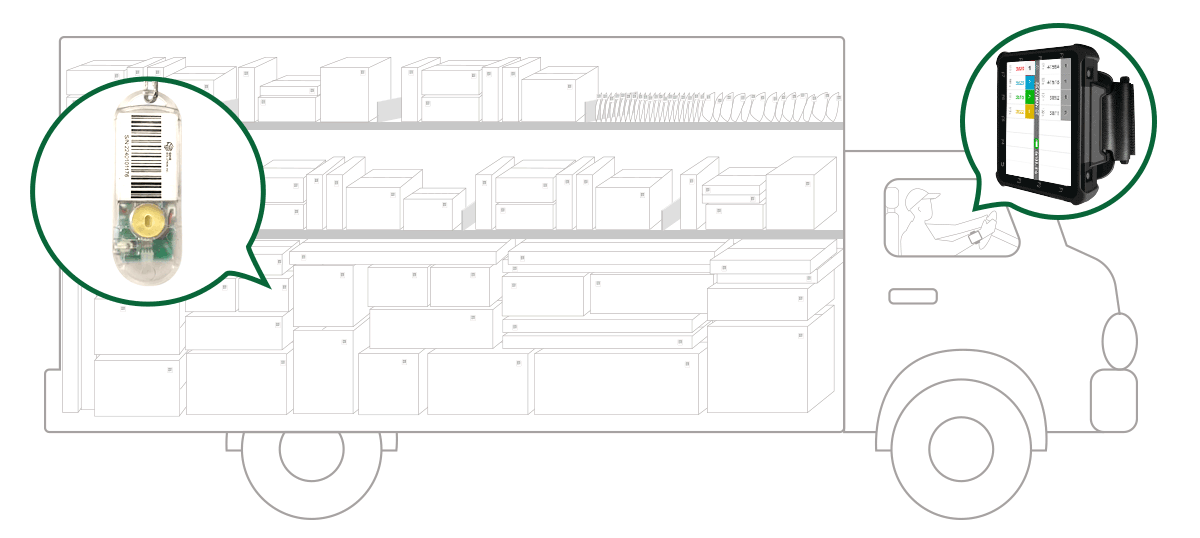Why Amazon’s VAPR Isn’t The Perfect Solution for Package Delivery Retrieval
November 6, 2024
On October 9, 2024, Amazon finally released its Vision Assisted Package Retrieval (VAPR) solution that had been in development for the past few years. VAPR is intended to address a problem that has bedeviled the last-mile delivery industry: drivers searching and hunting for the correct package in the cargo van for a customer delivery.
VAPR replaces the need for manual scanning of bar codes to identify the right customer package in the van. When the cargo van arrives at a delivery location, VAPR will automatically project a green “O” on all packages that will be delivered at that stop and a red “X” on all other packages. Through audio and visual cues, VAPR guides the driver to select the right package before he or she needs to enter the cargo area.
VAPR uses Amazon’s special computer vision system for automatic bar code reading in conjunction with a camera and light projectors to illuminate the van interior. The VAPR is also integrated into the van’s navigation system.

Amazon’s Vision-Assisted Package Retrieval (VAPR): https://www.aboutamazon.com/news/transportation/amazon-vapr-delivery-van-packages
We Agree Package Searching Wastes The Driver’s Time
We at Lotwork have also been working on that same problem. Partnered with GHE Solution Inc., we’ve tracked the entire delivery process of various delivery drivers hundreds of times. Our research has found that 50 percent of a driver’s time is spent directly and indirectly on searching for packages in the current practice of express and last-mile delivery.
Based on our driver studies, we’ve found this. It is very fast for a driver to find the correct package among less than 10 packages. But the time for package identification climbs to between 20 to 30 seconds when there are 20 to 30 packages that are haphazardly arranged.
Moreover, the time spent searching for the correct delivery article can take more than 10 minutes when the sought-after item lies among a bunch of between 200 to 300 disarranged packages. If there are no various auxiliary measures to help the driver find the target package quickly, then he or she will not be able to complete the delivery of between 200 to 300 packages within a normal work shift.
Why Amazon’s Solution Isn’t Ideal
Amazon’s VAPR requires a camera in each vehicle for the solution to function. It also requires that the packages be placed such that the labels and stickers on them are positioned for the camera to read them.
Now let’s assume a driver has to go down a bumpy road to make the delivery. When the vehicle hits a bump or the driver makes a sharp turn to avoid a pothole, the packages move around and shift in the cargo van. Or let’s say the driver has to hit the brakes suddenly, the packages can again get jumbled. If sudden motion shuffles the packages such that the labels are no longer positioned for camera reading, then the driver has to go searching like before.
Lotwork’s Better Solution To The Problem
Our solution for package identification and retrieval takes into account article shuffling during transit. The GHE Last-mile delivery solution places light tags on each package that provide visual and sound cues that guide the driver to select the right item even in a pile. The tags use flashing lights and audible beeping sounds to provide ready package identification.
In the case where the driver’s vehicle hits a bump in the road and packages get thrown around haphazardly, the tags can still provide guidance as to item location in a van.

Our solution makes it both easier and safer for the delivery driver to do his or her job. By using our light tag technology for package identification and selection in last-mile delivery, we ensure increased driver productivity even when dealing with adverse road conditions that result in disarrayed packages.










